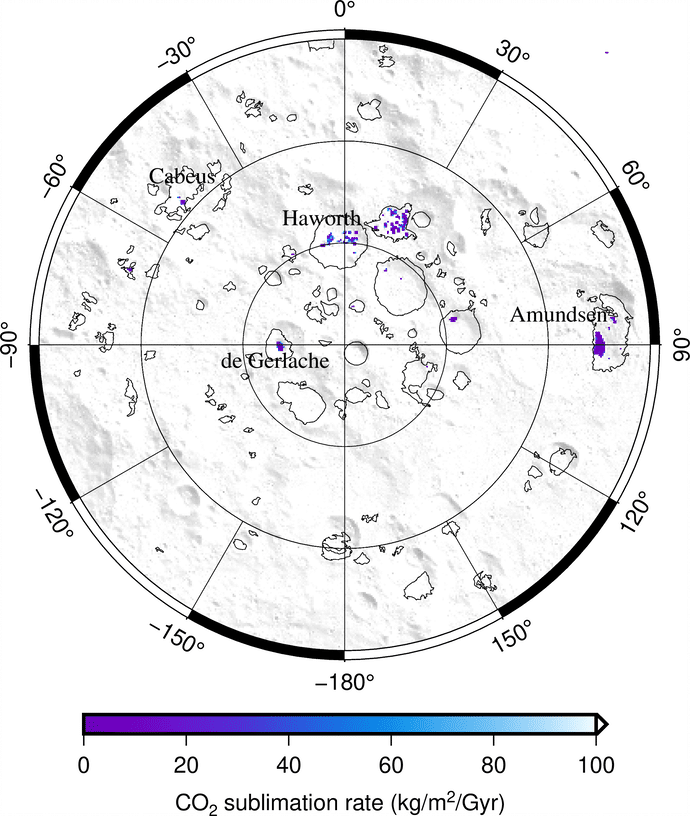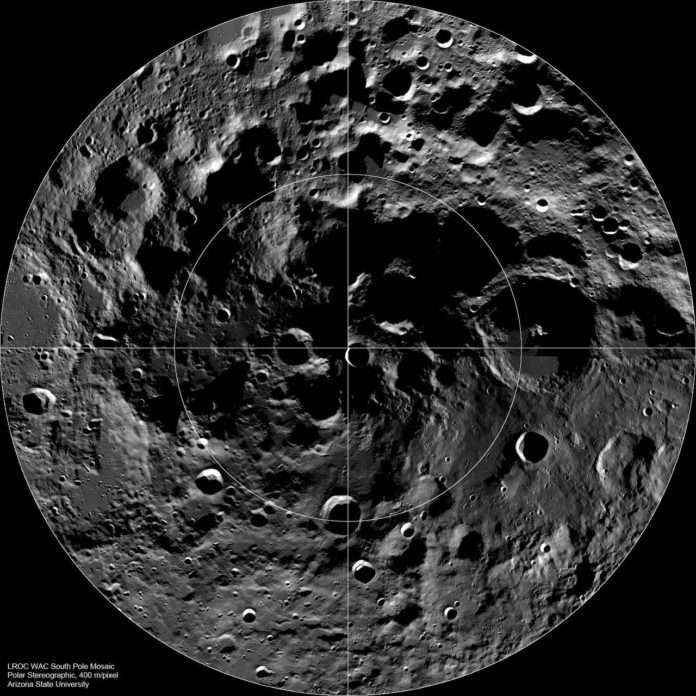A new discovery could significantly influence future lunar missions as scientists have confirmed the existence of lunar carbon dioxide cold traps that could potentially contain solid carbon dioxide.
Permanently shadowed regions, or PSRs, are areas near the north and south poles of the Moon that never receive direct sunlight and, hence are extremely cold. The carbon dioxide trapped in these regions could hold carbon dioxide molecules. These molecules could freeze and remain in solid form even during peak temperatures in the lunar summer.
According to scientists, future human or robot explorers could use this solid carbon dioxide to produce fuel or materials for longer lunar stays.
Scientists have predicted the existence of Carbon dioxide cold traps on the Moon for years. But, this is the first time scientists have firmly established and mapped the presence of carbon dioxide cold traps.
The thermal stability of solid carbon dioxide in the south polar region is determined by an analysis of 11 years of temperature measurements. Scientists analyzed 11 years of temperature data from the Diviner Lunar Radiometer Experiment, an instrument flying aboard NASA’s Lunar Reconnaissance Orbiter.

The analysis revealed that these cold traps include several pockets concentrated around the lunar southern pole. The total area of these carbon dioxide traps totals 204 square kilometers, with the largest area in the Amundsen Crater hosting 82 square kilometers of traps. In these areas, temperatures continually remain below 60 degrees, Kelvin.
Norbert Schörghofer, a planetary scientist at the Planetary Science Institute and lead author on the study, said, “I think when I started this, the question was, ‘Can we confidently say there are carbon dioxide cold traps on the moon or not?'”
“My surprise was that they’re actually, definitely there. It could have been that we can’t establish their existence, [they might have been] one pixel on a map… so I think the surprise was that we found contiguous regions which are cold enough, beyond doubt.”
However, the study does not guarantee the existence of solid carbon dioxide on the Moon. Still, this verification does make it highly likely that future missions could find carbon dioxide ice there.
If there is indeed solid carbon dioxide in these cold traps, it could potentially be used in various ways.
According to scientists, this discovery could impact the feasibility of a sustained robot or human presence on the Moon. The carbon dioxide and other potential volatile organics could also help scientists better understand the origin of water and other elements on the Moon.
Journal Reference:
- Norbert Schorghofer et al, Carbon Dioxide Cold Traps on the Moon, Geophysical Research Letters (2021). DOI: 10.1029/2021GL095533
